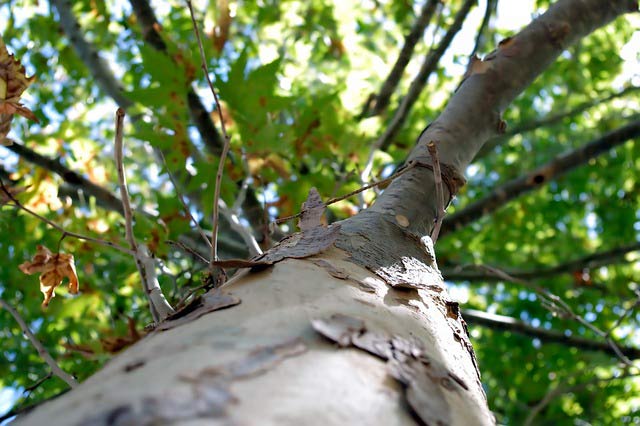One of the joys of spring is watching the winter-bare deciduous trees fill out with soft, new leafy foliage. If your tree doesn’t leaf out on schedule, you may start wondering, “is my tree dead?” It’s important to know the difference between a dead and a declining tree. Usually, sick trees can be saved, but a dead tree is a huge risk to you and your home. Here are some general guidelines used to determine if your tree is dead.
Look for Signs
The first “test” for determining the status of a tree is to inspect it. Walk around it and take a close look. One of the most obvious signs that a tree is not healthy is branch loss. If your tree failed to produce a full canopy of foliage, it could be having health issues or close to dying.
After you take a look at the tree’s canopy, inspect the trunk. A trunk provides good evidence if it becomes ill or malnourished. Look closely for vertical cracks, a good indication that it is not doing well in terms of health.
The appearance of mushrooms and other fungal growths are another common sign of a dead tree or tree decline. Pay close attention to the trunk and the base of the tree.
Root damage can be hard to spot on a relatively young or newly planted tree. However, you can sometimes spot this warning sign yourself. For instance, look to see if the tree is leaning to one particular side. This is an indication that the root system is damaged or weakened. You can also look for epicormic shoots. These are misplaced branches growing out of the bottom of a tree trunk. These can often indicate that a tree has damaged roots.
Pop Quiz!
A scratch test is one of the best ways to determine if a tree or any plant is dead. Just beneath the dry, outer layer of bark in a tree’s trunk lies the cambium layer of bark. In a living tree, this is green. But in a dead tree, it is brown and dry. Scratching bark to see if the tree is alive involves removing a little bit of the outside layer of bark to get a look at the cambium layer. Use a fingernail or small pocketknife to remove a small strip of exterior bark. Don’t make a large wound in the tree, just enough to see the layer below. If you perform the tree scratch test on a tree trunk and see green tissue, the tree is alive. Keep in mind, this does not always work so well if you scratch a single branch, since the branch may be dead but the rest of the tree alive. So, try a few.
If your tree passed the scratch test, that’s great! Now the next step is to find out if and how you can save your sick tree. The most reliable way to do this is to have a certified arborist inspect the tree in person and provide a diagnosis and treatment plan.
If you suspect your trees are suffering from any of these issues, or if you just can’t seem to keep them thriving, we can help. Contact us today to diagnose and mitigate any potential issues with your soil or your root system.


